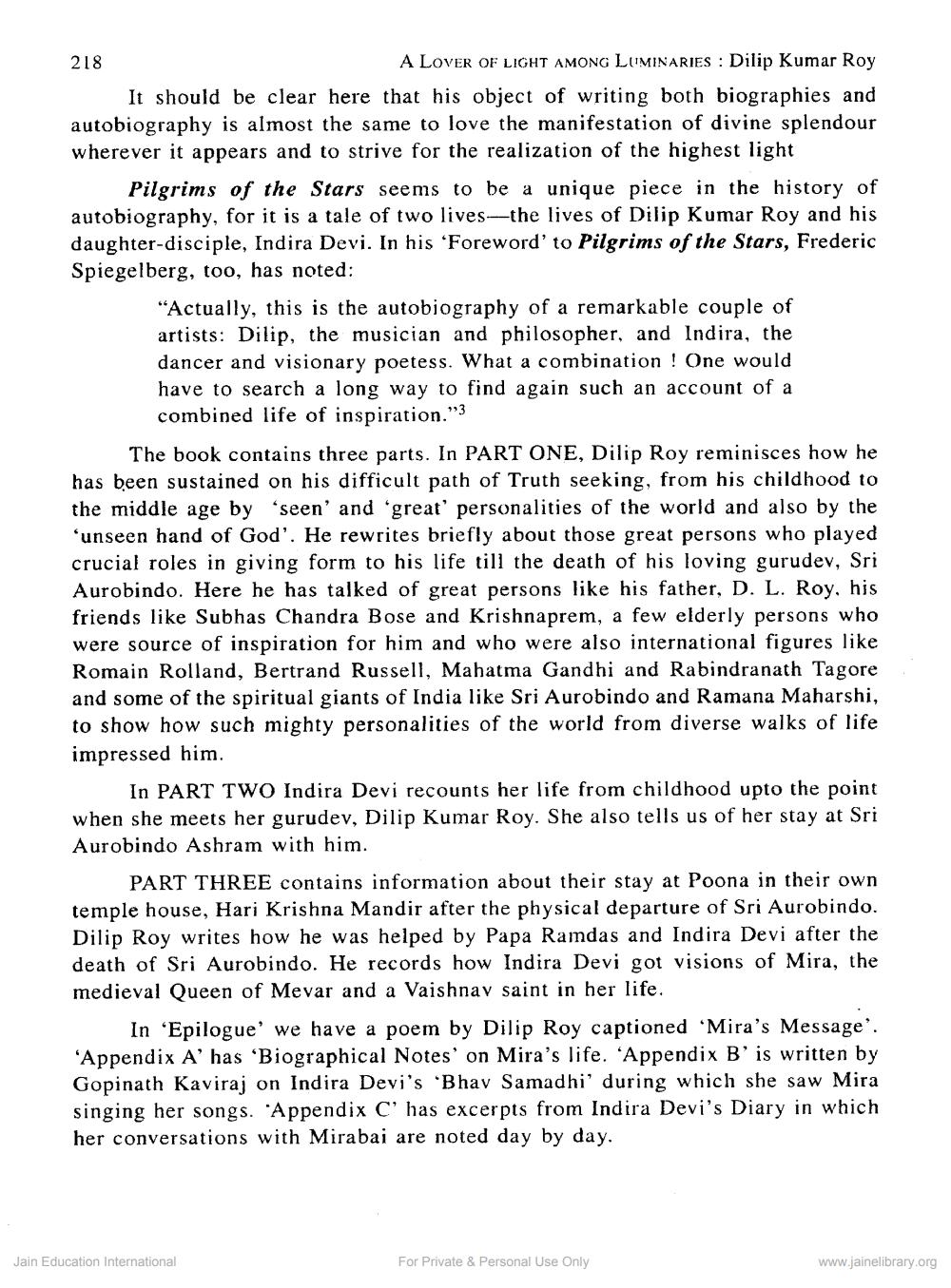________________
218
A LOVER OF LIGHT AMONG LUMINARIES : Dilip Kumar Roy It should be clear here that his object of writing both biographies and autobiography is almost the same to love the manifestation of divine splendour wherever it appears and to strive for the realization of the highest light
Pilgrims of the Stars seems to be a unique piece in the history of autobiography, for it is a tale of two lives—the lives of Dilip Kumar Roy and his daughter-disciple, Indira Devi. In his 'Foreword' to Pilgrims of the Stars, Frederic Spiegelberg, too, has noted:
"Actually, this is the autobiography of a remarkable couple of artists: Dilip, the musician and philosopher, and Indira, the dancer and visionary poetess. What a combination ! One would have to search a long way to find again such an account of a combined life of inspiration."3
The book contains three parts. In PART ONE, Dilip Roy reminisces how he has been sustained on his difficult path of Truth seeking, from his childhood to the middle age by ‘seen' and 'great' personalities of the world and also by the 'unseen hand of God'. He rewrites briefly about those great persons who played crucial roles in giving form to his life till the death of his loving gurudev, Sri Aurobindo. Here he has talked of great persons like his father, D. L. Roy, his friends like Subhas Chandra Bose and Krishnaprem, a few elderly persons who were source of inspiration for him and who were also international figures like Romain Rolland, Bertrand Russell, Mahatma Gandhi and Rabindranath Tagore and some of the spiritual giants of India like Sri Aurobindo and Ramana Maharshi, to show how such mighty personalities of the world from diverse walks of life impressed him.
In PART TWO Indira Devi recounts her life from childhood upto the point when she meets her gurudev, Dilip Kumar Roy. She also tells us of her stay at Sri Aurobindo Ashram with him.
PART THREE contains information about their stay at Poona in their own temple house, Hari Krishna Mandir after the physical departure of Sri Aurobindo. Dilip Roy writes how he was helped by Papa Ramdas and Indira Devi after the death of Sri Aurobindo. He records how Indira Devi got visions of Mira, the medieval Queen of Mevar and a Vaishnav saint in her life.
In 'Epilogue' we have a poem by Dilip Roy captioned 'Mira's Message'. 'Appendix A' has ‘Biographical Notes' on Mira's life. 'Appendix B' is written by Gopinath Kaviraj on Indira Devi's 'Bhav Samadhi' during which she saw Mira singing her songs. Appendix C'has excerpts from Indira Devi's Diary in which her conversations with Mirabai are noted day by day.
Jain Education International
For Private & Personal Use Only
www.jainelibrary.org




